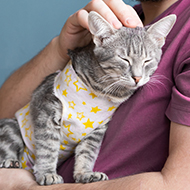Avian flu research to study virus in UK wildlife
Gannets were among the bird species affected by the H5N1 outbreak.
A £2.3 million research consortium, funded by the Department for Environment, Food and Rural Affairs, is set to examine how avian influenza behaves in wildlife in the UK.
Scientists from the Animal Plant Health Agency (APHA), alongside the British Trust for Ornithology, the RSPB, the University of Edinburgh and NatureScot, will collect samples under license from a range of bird and mammal populations.
The birds samples will be analysed to assess whether an active infection or antibodies from a previous exposure are present. The data will help the researchers to measure the extent of immunity in native bird populations and better understand how the circulation of different strains could influence the emergence of new notifiable avian influenza viruses.
The global H5N1 outbreak, which reached the UK in 2021, had a large impact on both kept and wild birds. An estimated 3.8 million birds died in the UK, with seabird species such as black-headed gulls and gannets particularly affected.
During the outbreak, the genetic make-up of the virus changed on several occasions, allowing the virus to infect a broader range of species. As well as affecting birds, the virus was also detected in wild mammals including otters and foxes. Such cases were likely caused by the animals scavenging on infected birds.
The consortium will look at the susceptibility of different mammal species to the virus, the potential ways the virus could spread between birds and mammals, and the role that mammals could play in spreading the disease during an outbreak. Rats, foxes, and otters in environments where there have been mass mortality events involving birds in the past two years will be tested.
Ashley Banyard, influenza and avian virology workgroup leader at APHA, said: “Having access to a wider range of samples will mean we can study avian influenza viruses in much greater detail to learn more about how they behave and interact and how this might affect future disease outbreaks.
“This vital research project brings together some of the leading ornithological organisations to help gather the samples, and ultimately, following diagnostic testing, increase our understanding of avian influenza viruses across bird populations within Great Britain.
“This will help APHA inform the development of future strategies to protect our wildlife and minimise the impacts of this awful disease on both animals and humans.”
Image © Shutterstock



 RCVS Knowledge has called on vet practices to audit their post-operative neutering outcomes.
RCVS Knowledge has called on vet practices to audit their post-operative neutering outcomes.